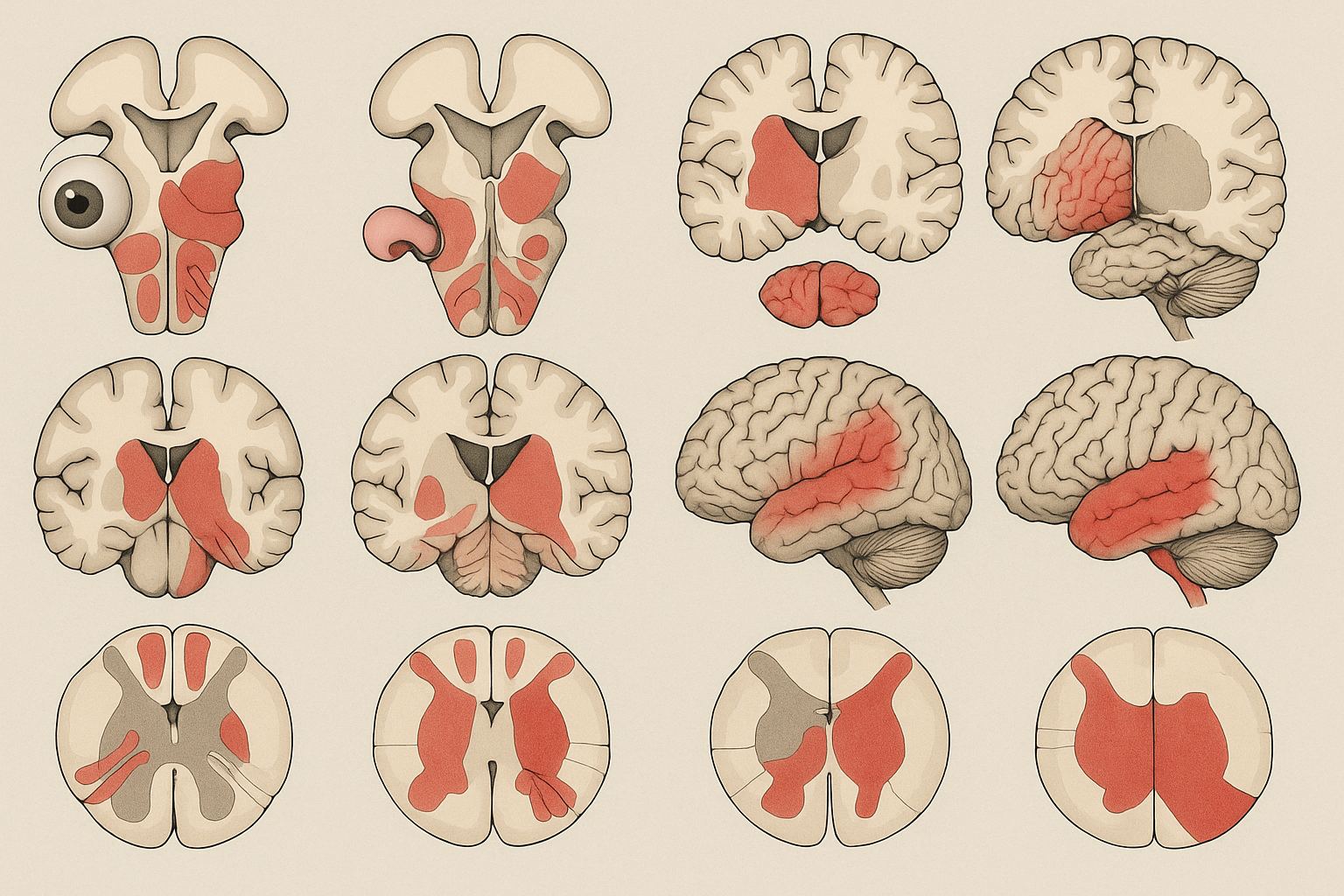Pass/fail changes the motivational landscape. When there’s no three-digit carrot, learners risk drifting into vague goals like “study more” or “do a lot of questions,” which feel good in the moment but rarely add up to a reliable pass. The fix isn’t to invent a phantom score; it’s to replace outcome obsession with controllable, high-yield targets that move the physiology and recall you’ll need on exam day. Targets should focus on inputs (what you directly do), leading indicators (early signals your system is working), and guardrails (minimums that prevent slumps from turning into spirals). Together, these keep you in motion without feeding anxiety. Three realities make good target design essential. First, Step 1 is a long game of retention, not just exposure; forgetting is the default, so you need structures that force spaced retrieval and timed practice. Second, energy and attention vary—by day and by phase—so your system must survive low-motivation days without collapsing. Third, feedback must be fast to be motivating; if results arrive only every few weeks (e.g., NBME diagnostics), you’ll under-correct. Proper targets shrink feedback cycles to days and weeks, letting you course-correct before small problems compound. Think like a clinician setting management goals: write orders you can actually carry out, with monitoring plans and safety nets. “Hit 80% on UWorld” is not a daily order. “Two timed 40-question blocks with full review and two levels of ‘why’ per miss” is. “Master biochem” is not a plan. “20-minute enzyme pathways retrieval on a two-day schedule plus 25 High-Yield Anki cards tagged ‘metabolism’” is. When you articulate targets in this level of granularity, a pass becomes the natural downstream effect of many small, verifiable wins. The rest of this guide lays out a full specification for targets that actually work: how to select them, quantify them, track them, and stress-test them. You’ll get a weekly scoreboard, a recovery protocol for bad days, sprint/deload pacing to avoid burnout, and a rapid-review checklist for the final mile. The goal is simple: make doing the right thing easier than not doing it—and turn “pass” from an abstraction into a steady cadence of controllable actions. Effective targets live in three tiers. Inputs are the controllable, concrete actions you will execute (e.g., “80 new Anki reviews + 120 mature reviews,” “one 40-question timed block,” “90 minutes of system-based rapid recall”). Leading indicators are short-horizon signals that these inputs are working (e.g., “≥70% first-pass on mixed blocks,” “< 65 min per 40Q block,” “Anki ease stable; mature retention ≥85%”). Guardrails are minimums and limits that protect the system (e.g., “no zero-days; if late start, run a 45-minute ‘salvage’ plan,” “finish by 10:30 pm,” “sleep ≥7 h,” “deload after two high-volume weeks”). To make targets resilient, specify them using the SMARTER pattern: Specific (what, where, when), Measurable (numerical or binary), Achievable (fits your real bandwidth), Relevant (ties to Step 1 tasks), Time-bound (daily/weekly cadence), Evaluated (weekly review), and Revised (tuned after sprints). Example: “Mon–Sat: 1 timed 40Q mixed block + deep review with error tagging, 150 total Anki reviews (split 2 sessions), and 20-minute rapid-recall for the current weak system; Sun: deload + targeted consolidation.” Two clarifications help. First, choose minimum effective doses (MEDs) rather than heroic daily quotas; your median day should meet the target. Second, standardize “done.” For question review, that might mean: (1) identify primary miss reason (knowledge vs. inference vs. time), (2) write a one-sentence principle, (3) tag card/topic, (4) schedule a 48-hour re-test. For Anki, define caps that prevent backlog explosions but preserve spacing quality (e.g., “new cards 30–60/day; leeches suspended for targeted clinic-style review once/week”). Write these as visible commitments on your weekly scoreboard (see next section). If you can’t observe it, you can’t manage it. If you can’t complete it on a below-average day, it’s not a target—it’s a wish. Motivation rises when progress is visible and attributable to your behavior. Build a one-page scoreboard that captures: (1) input completions, (2) leading-indicator trends, and (3) a short “evidence log” of what improved because of last week’s adjustments. Keep it simple enough to fill in under five minutes per day and ten minutes on Sundays. At the bottom, add a “Proof” box: list two small wins attributable to behavior (“Switched to 90-second pacing; cut 6 ‘ran out of time’ misses,” “Added 48-hour re-test; mechanism questions improved 6/10”). This reinforces the cause–effect link between deliberate practice and performance, which is crucial in a pass/fail environment. To prevent scoreboard fatigue, cap the number of tracked items. You only need the signals that change decisions: are blocks getting faster/cleaner? Is recall stable? Are specific error types shrinking? If a metric never changes your plan, drop it. Likewise, make the scoreboard frictionless: pre-print a weekly sheet or keep a pinned note in your study app. Color small boxes for each completed input; the “don’t break the chain” visual is often enough to pull you into motion on low-energy days. Finally, connect the scoreboard to your weekly review: on Sunday, decide one micro-adjustment (≤10% change) for the next week. Examples: “swap one mixed block for a targeted cardio block,” “reduce new Anki by 20% to clear reviews,” or “frontload AM study to protect sleep.” Small, principled tweaks beat big overhauls and preserve motivation by keeping wins within reach. Practice exactly how you’ll be tested—adaptive QBank, live CCS, and clarity from your data. Pass/fail can feel solitary; create external structure so your targets survive mood and fatigue. Three loops work well. First, pre-commitments: decide in advance what you’ll do and under what conditions. “If it’s 8:00 am and I’ve finished coffee, then I start a 40Q timed block (no phone, headphones on).” This “if–then” framing reduces start-up hesitation because the cue is defined. Second, public check-ins: share a picture of your completed scoreboard boxes or a brief update in a small accountability group 3×/week. You’re not reporting scores—only completion of inputs and one thing you learned. Third, friction design: block distractions and make your starts effortless. Keep your test-mode app, question bank, and Anki deck preloaded so a single keystroke launches the next task. To formalize this, write a habit contract for your MED targets. It can be lightweight: “I will complete one timed 40Q block with full review and 150 Anki reviews Mon–Sat. If I miss, I’ll run the 45-minute salvage plan before relaxing.” Ask a peer to countersign, and post it where you study. The contract’s power isn’t punishment; it’s clarity. When the day goes sideways, you already know the next right step. For many learners, the biggest gain is decoupling identity from single-session outcomes. You’re not trying to “be motivated”; you’re running a protocol. The protocol creates a reliable path through messy days. Your job is to show up and execute the next small piece. By engineering low-friction starts, social proof, and clear “if–then” rules, you turn motivation from a feeling into a set of behaviors that happen anyway. Feedback drives motivation when it is informative, frequent, and under your control. Instead of living and dying by occasional NBME snapshots, embed micro-diagnostics into your weekly rhythm that tell you which knob to turn next. Use three lenses: Translate diagnostics into small interventions you can keep for seven days. Examples: “15-minute stem-reading drill on Tue/Thu,” “cap new Anki at 40 for five days,” “add one targeted renal block Friday.” The goal is trend, not perfection. If your first-pass percentage or time-per-question improves even modestly while inputs remain stable, that’s strong evidence your process is working. When to pull a larger lever? (1) If first-pass falls >5 points for two consecutive weeks despite stable inputs, (2) if mature retention stays <80% for two weeks, or (3) if “knowledge gap” remains the dominant error across ≥4 systems. Then temporarily shift one mixed block to system-targeted practice and shrink new cards until recall stabilizes. You can still schedule an NBME at key milestones, but treat it as a lagging indicator—useful for macro-calibration, not daily motivation. Your weekly diagnostics should be the engine that keeps you engaged and improving. Motivation’s biggest enemy is the zero-day: no questions, no reviews, no recall. The worst part is not the lost content; it’s the psychological drag the next morning. Build a scripted salvage plan you can run in 45 minutes to transmute a teetering day into forward motion: End with a micro-win note on your scoreboard. This protects identity (“I am a person who studies daily”) and keeps spacing intact. On truly low-energy days, deploy a dopamine menu of low-friction tasks that still count as inputs: watch a tightly scoped 10–15 minute concept explainer and do five retrieval prompts; run a 15-minute rapid-recall for one pathway; tidy your tags and suspend leeches; re-test yesterday’s top two error types. The key is momentum, not heroics. Wrap all of this in the “miss once, not twice” rule. If you miss your primary input today, you must at least run the salvage plan before bed, and tomorrow you return to normal targets—no punitive doubling. Punishment plans create avoidance; salvage plans create re-entry. To prevent cluster failures, maintain a short list of red flags that trigger early intervention: three consecutive days under 60% of Anki reviews, two blocks in a row with pacing collapse, or three evenings after 23:00. Red flags cue a temporary scale-down (90% → 70% MED), an earlier start, and a check-in with your accountability buddy. Finally, celebrate adherence rather than outcomes: tick the boxes, share your “proof” sentence, and shut the laptop. Providing your brain a clear completion signal each day is itself motivational fuel for the next. The work compounds when the streak survives bad weather. Motivation tends to peak in focused bursts and sag under constant max effort. Periodize your Step 1 prep into two-week sprints followed by a three-day deload (not time off, but reduced volume and elevated consolidation). During sprints, run your full MED targets: one 40-question timed mixed block daily, 150 Anki reviews, 20-minute rapid recall. Add a system emphasis (e.g., cardio) by swapping one mixed block per week for a targeted block and adding 10-minute focused recall drills on off days. During the deload, shrink inputs by ~40%: 20-question timed blocks, mature-card reviews only, and a 90-minute consolidation session where you revisit your top 15 error principles from the prior two weeks. Rework them into high-quality retrieval prompts or “clinic-style” cases. The deload is also a place to fix process: if pacing lagged, practice 75-second cap drills; if inferential misses rose, do “justify why wrong” exercises for five stems. You’ll return to the next sprint fresher, with tighter technique. To operationalize this, schedule your calendar in blocks: Sprint A (Days 1–14), Deload (Days 15–17), Sprint B (Days 18–31). Place NBMEs only at sprint boundaries if needed for reassurance; your weekly diagnostics should govern day-to-day changes. Keep sleep, movement, and nutrition as protected guardrails: seven hours of sleep minimum, a 20–30 minute walk or light workout most days, and consistent meals. Fatigue masquerades as low motivation; manage the physiology and your “motivation” will often return on its own. Finally, integrate morale boosters you can count on: a Friday afternoon “proof-of-progress” review with a friend; a Sunday planning coffee; one intentionally easy day (still hit the salvage plan). Burnout isn’t only about hours—it’s about the ratio of strain to recovery and whether you can see improvement. Periodization keeps strain productive and makes improvement visible, which together preserves the drive you need through the final weeks. As you approach the last 2–3 weeks, shift from acquisition to stability under exam conditions. The mission: maintain recall, tighten pacing, and ensure your protocols fire automatically when stress rises. Keep one mixed block per day (timed, exam interface), one shorter targeted block 2–3×/week for the last stubborn system, and daily mature-card reviews with strict caps on new content. Every miss gets a one-sentence principle and a 48-hour re-test. If sleep or anxiety wobble, reduce volume by 15–20% and prioritize consistency. Exam-Day Essentials: arrive with a practiced break plan (snack, bathroom, 3-minute walk), pacing anchors (e.g., check timer at Q10/20/30), and your stem algorithm: demographics → task → last sentence → scan answers → read stem fully. Trust your training: justify why wrong, then choose and move. If anxiety spikes, execute your two-breath reset, re-state the task in five words, and engage the next item. Your scoreboard, diagnostics, and salvage plans have built the muscle memory you need; exam day is simply the next block.From “Pass” to Progress: Why Target Design Matters Now
Designing Targets: Inputs, Leading Indicators, and Guardrails
Target Type Examples (Daily) Weekly Minimums Why It Motivates Input 1×40Q timed mixed + full review; 150 Anki reviews; 20-min rapid recall 6 blocks; 900 Anki; 6 recall sessions Fully controllable; builds momentum regardless of score Leading Indicator First-pass ≥65–75%; avg. 85–95 sec/question Trend non-negative week to week Fast feedback loops nudge effort without anxiety Guardrail No zero-days; finish by 22:30; sleep ≥7h “Miss once, not twice” rule Prevents lapses from turning into spirals The Weekly Scoreboard: Proof-of-Progress You Can See
Daily Tally (Mon–Sun)
Leading Indicator Tracker
Master your USMLE prep with MDSteps.
100+ new students last month.
Accountability Loops: Pre-Commitments, Public Check-Ins, and Friction Design
Diagnostics That Don’t Derail: Fast Feedback Without Score Anxiety
No-Zero-Days Protocol: Salvage Plans, Dopamine Menus, and the “Miss Once” Rule
Sprint–Deload Pacing: Sustain Energy Without Losing Retention
Final Mile: Rapid-Review Checklist and Exam-Day Essentials
Rapid-Review Checklist (7–10 Days Out)
Selected Sources
Staying Motivated in the USMLE Pass/Fail Era: Targets That Actually Work






